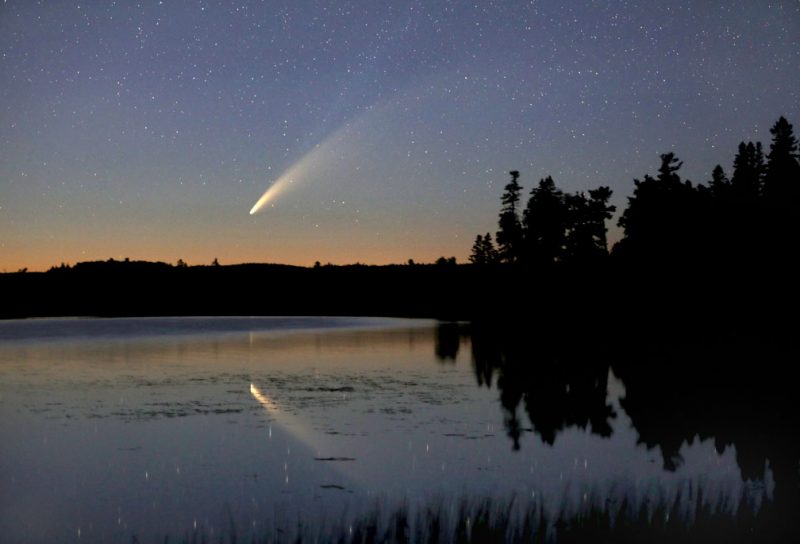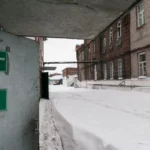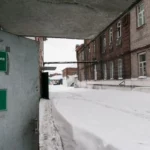

For the last half of July, and if you are in the Northern Hemisphere, look to the northwest in the evening sky to see Comet NEOWISE. Breathtaking photos of the comet are popping up across social media, most of them taken earlier this month when the comet was most visible around dawn. Why all the hype about the Neowise comet? Unlike most comets, Neowise is bright enough that you can see it without a telescope. Binoculars give you a nicer view, but you don’t need those either. The last time you could see a comet with the unaided eye was 25 years ago with Comet Hale-Bopp.
Neowise is a 3-mile wide ball of ice and dust, large compared to most comets. It reflects sunlight off its head (or “coma”) and its tail of dust and gas. This comet also has a second tail of ionized particles blown back by solar winds. NASA’s Near-Earth Object Wide-field Infrared Survey Explorer (NEOWISE) discovered the approaching comet on March 27th of this year. The Neowise comet will make its closest approach to Earth on July 22nd at 64 million miles, about two-thirds the distance between the Earth and the Sun.
To get the best view of Neowise, find a viewing area away from city light pollution. Make sure you have unobstructed sight of the western horizon, wait at least 45 minutes after sunset, and then look for a fuzzy star with tail. If you are having trouble finding the comet, use the Big Dipper to help. Search for the comet between the “cup” of the Big Dipper and the horizon. If you want to take a picture of the celestial spectacle, try photographing it with a few minutes of exposure time. Don’t miss your chance to see the comet! Once it’s gone, Neowise won’t be back for another 6,800 years.
“Have You Seen Comet Neowise?” written for HLH by Esther Davis








